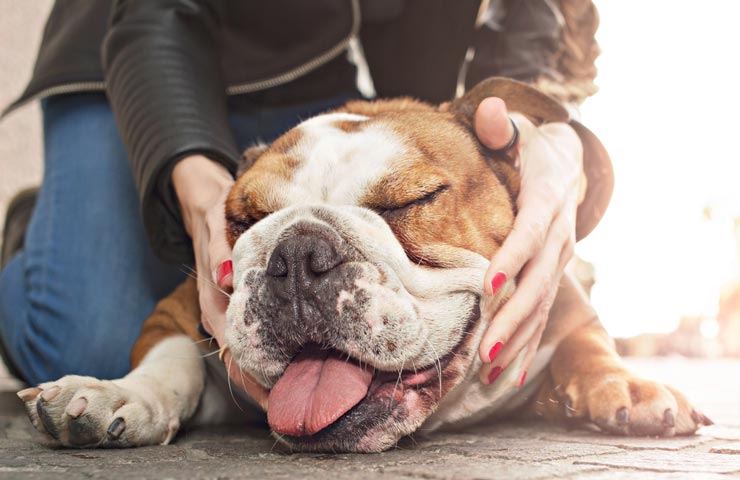My Dog Has a Lump: What Do I Do?

It can be an incredibly scary thing to be petting your dog and suddenly feel a lump or bump that wasn't there before. Don't panic; here's what you need to know.
Causes of Lumps on Dogs
Lumps and bumps on a dog's skin can be caused by a variety of things. Here are the common ones:
- A wound or abscess.
- A cancerous tumor.
- A non-cancerous tumor like a lipoma, wart, or skin tag.
- An enlarged lymph node.
- A tick.
Sometimes, parting the fur and getting a good look at what you're feeling can reveal a wound, a tick, a wart, or a skin tag.
If you find a small lump or wound on your dog's skin, you might want to mark it with a sharpie to be able to find it easily again. A dog's fur can make it hard to find small bumps.
Diagnosis of Canine Lumps
If you find a new lump on your dog, the first thing to do is evaluate whether he seems to be feeling fine otherwise. If he's not eating well, is lethargic, or the lump is warm to the touch, call and make an immediate appointment with the veterinarian. If he seems to be doing fine otherwise, monitor the lump closely and get in with the veterinarian at the next available regular opening that fits your schedule.
The doctor will thoroughly examine your dog, including the lump, and ask you questions about when you discovered it and whether it's changed in size, consistency, or behavior since then. If the lump is readily identifiable through examination, your veterinarian will tell you what it is and what should be done.
Make a habit of feeling all over your dog's body once a week so you will find any new lumps right away.
If the lump is not diagnosable by sight, the doctor might recommend a fine needle aspirate, or FNA. This procedure involves placing a needle into the mass and removing some cells to look at under the microscope. Diagnosis may or may not be possible with this test alone.
If the FNA is suspicious for cancer or a diagnosis can't be made with it, the veterinarian might recommend a biopsy. Your dog will need to undergo anesthesia for this procedure, and part or all of the mass will be removed and sent to a pathologist for evaluation and identification.
Sometimes removal is all that is necessary, but some cancers require radiation or chemotherapy after the bulk of the mass is removed.
You May Also Like These Articles:
Does Your Dog Have Hairy Teeth?
Lick Granuloma: Causes, Treatments, and Prevention of Acral Lick Granuloma in Dogs
Dealing With Canine Scratching and Licking
Disclaimer: This website is not intended to replace professional consultation, diagnosis, or treatment by a licensed veterinarian. If you require any veterinary related advice, contact your veterinarian promptly. Information at DogHealth.com is exclusively of a general reference nature. Do not disregard veterinary advice or delay treatment as a result of accessing information at this site. Just Answer is an external service not affiliated with DogHealth.com.


